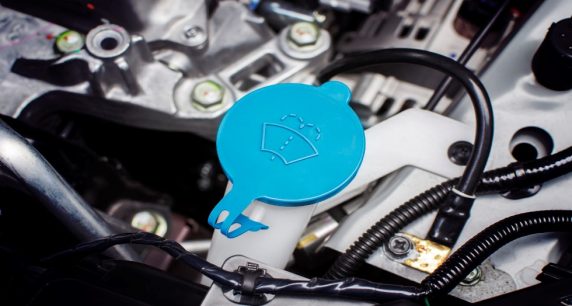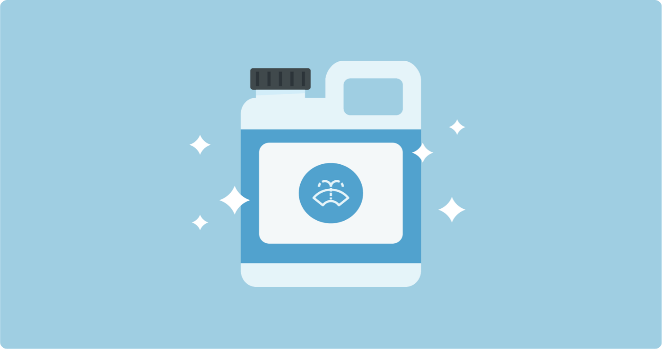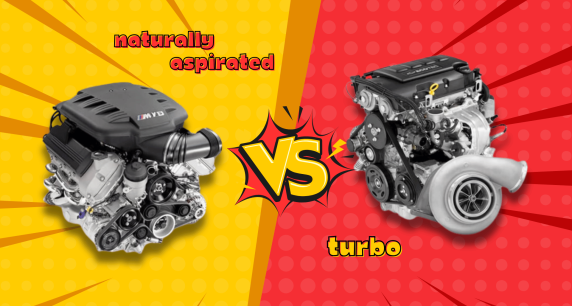How to Choose the Right Windshield Wiper Fluid?

Water, the “universal solvent,” can sometimes keep your windshield clear, but causes problems. First, if you live in a cold climate, plain water will freeze. Even if it doesn’t damage the reservoir, pump, tubes, or spray heads, it won’t do anything to remove winter grime from your windshield. If you can’t see clearly, you could get into an accident. Second, in a warm climate, plain water will breed bacteria. Whether to prevent disease or improve visibility, using windshield washer fluid is suggested over plain water.
Windshield washer fluid, also called windshield wiper fluid, washer fluid, washer solvent, or wiper fluid, isn’t simply water. A mixture of water, solvents, alcohol, and detergents, washer fluid is specifically formulated to dissolve road grime and dead bugs and wash away dust and dirt. With a good pair of windshield wiper blades – you should replace them about once every four to six months – you should be left with a clear windshield and a streak-free shine, for maximum visibility and minimum glare.
HOW TO REFILL WINDSHIELD WASHER FLUID?
Unlike motor oil and other fluids in your vehicle, windshield washer fluid doesn’t break down and never needs changing. Therefore, there’s no specified procedure for changing windshield washer fluid.
That said, if the fluid gets low you can top it off using the following steps:
- Open your vehicle’s hood.
- Find the windshield washer reservoir cap. This will be either a screw-on or press-on cap with an image of water spraying on a windshield.
- Pull the cap upward or unscrew it.
- Pour the windshield washer fluid into the reservoir until it reaches the “Full” mark or is at the top of the filler neck.
- Press the windshield washer reservoir cap downward until it clicks into place or screw the cap back on.
- Close your vehicle’s hood.
WHEN TO REFILL YOUR WINDSHIELD WASHER FLUID

Many vehicles now include warning lights or messages that alert you when the fluid is low. It will either be a light in the shape of a windshield with water spraying on it or a message that reads something like “Windshield washer fluid low.”
At this point, top off the windshield washer fluid reservoir using the steps listed above.
If your vehicle has no windshield washer fluid light or message, you must proceed with a little more care to avoid damaging the system. If you activate your windshield washer fluid and nothing comes out after a few seconds, stop and refill the fluid reservoir using the steps outlined above.
Don’t continue trying to activate the windshield washer fluid when it’s empty as the fluid acts as a coolant for the windshield washer fluid pump. If there’s no fluid in the reservoir, the pump may overheat and fail, leading to a costly repair.
WINDSHIELD WASHER FLUID TYPES
Like so many other automotive fluids, there are various windshield washer fluid types. But instead of each fluid being for specific vehicles, these fluids are for varying environments and climates.
- Standard Windshield Washer Fluid
This is the basic, run-of-the-mill blue liquid you can pick up at any auto parts store, discount store, or pay-three-times-as-much-for-it-in-a-pinch gas station. This fluid is generally a mixture of water, methanol, and other chemicals.
Because of its high concentration of cleaning agents, standard windshield washer fluid tends to clean more thoroughly, leaving you with a clear view and fewer streaks than other mixtures.

- Bug Remover Windshield Washer Fluid
During the summer and spring, bugs are in full force, coating windshields in their sticky guts. This is when bug remover windshield washer fluid’s extra cleaning additives come in handy. This type of fluid is especially adept at dissolving and washing away bug splatter. However, because there are more cleaning agents, there’s less room for antifreeze, leading to higher freeze points.
Water-Beading Windshield Washer Fluid
Sometimes sold as washer fluid and other times as an additive you mix with your existing washer fluid, this water-beading formula uses silicone and other chemicals to force the rain to beat up on your windshield and roll off.
This beading action can help improve visibility in heavy rain, but the water repellent chemicals tend to cause more streaking as your wiper blades age. You’ll see various beading windshield washer fluids, but Rain-X is one of the most popular.

De-Icing Windshield Washer Fluid
De-icing windshield washer fluid is specifically for those frigid Canadian winters, as it features an antifreeze additive, typically ethylene glycol and methanol, that allows it to endure temperatures of -49 degrees C or lower without freezing.
This antifreeze property not only prevents the fluid from freezing but it also means you can use it to melt a thin layer of ice from your windshield.
The downside of the heavy antifreeze content is there’s less room for cleaning agents, so it may not wipe away dirt, grime, and other debris as well as typical washer fluid. Winter windshield washer fluid also tends to be the most expensive mixture.

All-Season Windshield Washer Fluid
Can’t decide which windshield washer fluid is best for you? You can meet in the middle with an all-season windshield washer fluid.
This year-round formulation generally endures relatively low temperatures — sometimes as low as -45 degrees C — without freezing and includes additives to remove bugs and enough cleaning agents to wash away road grime.

WASHER FLUID HELPS YOU DRIVE MORE SAFELY
Everyone can agree that, if you cannot see, you cannot drive safely. Keeping watch on your washer fluid level, using the right type, and with a good set of wiper blades, you take care of your visibility. The better you can see, day or night, rain or shine, bugs or dust, the more prepared you’ll be to react to ever-changing circumstances on the road. Have you topped off your washer fluid lately? If not, maybe today is a good day to do it.



